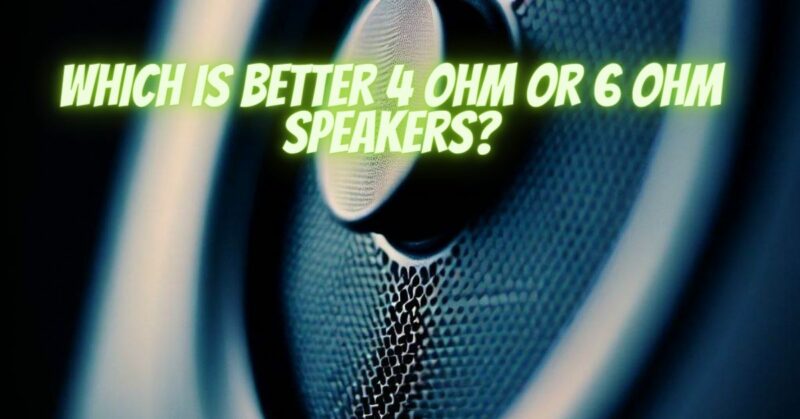Choosing the right speakers is a pivotal decision for audio enthusiasts aiming to achieve optimal sound quality in their audio systems. One crucial factor to consider is the speaker’s impedance, measured in ohms. The debate between 4 ohm and 6 ohm speakers is a common conundrum, with audiophiles pondering which impedance rating is better suited for their setups. In this article, we delve into the differences between 4 ohm and 6 ohm speakers to help you make an informed decision.
- Understanding Speaker Impedance: Speaker impedance, measured in ohms, represents the electrical resistance the speaker presents to the amplifier. Common impedance ratings for speakers include 4, 6, and 8 ohms. The choice between 4 ohm and 6 ohm speakers involves considering the compatibility with amplifiers and the impact on overall audio performance.
- Amplifier Compatibility: One primary consideration when choosing between 4 ohm and 6 ohm speakers is the compatibility with amplifiers. Most amplifiers are designed to work with speakers within a certain impedance range. While many amplifiers can accommodate both 4 ohm and 6 ohm speakers, it’s crucial to check the specifications of your amplifier to ensure a proper match.
- Power Handling Capability: 4 ohm speakers generally have lower impedance, allowing them to draw more current from the amplifier. This can result in higher power output and increased efficiency. However, it’s essential to ensure that the amplifier can handle the lower impedance and deliver the necessary power without strain.
- Speaker Sensitivity: Sensitivity, measured in decibels (dB), indicates how efficiently a speaker converts electrical power into sound. In some cases, 4 ohm speakers may exhibit higher sensitivity than their 6 ohm counterparts. Higher sensitivity can lead to louder sound output with the same amount of power, providing an advantage in certain setups.
- Heat Dissipation: Lower impedance speakers, such as 4 ohms, tend to generate more heat as they draw more current from the amplifier. It’s crucial to consider the heat dissipation capabilities of both the speakers and the amplifier to prevent overheating and potential damage to the equipment.
- Room Size and Acoustics: The size and acoustics of the listening room can influence the choice between 4 ohm and 6 ohm speakers. Larger rooms may benefit from the increased efficiency of 4 ohm speakers, delivering a more impactful sound. Conversely, in smaller spaces, 6 ohm speakers might offer a balanced performance without overwhelming the room.
- Budget Considerations: The cost of speakers can also play a role in the decision-making process. In some cases, 4 ohm speakers might be more expensive than their 6 ohm counterparts. Consider your budget alongside your audio preferences and system requirements.
The choice between 4 ohm and 6 ohm speakers ultimately depends on various factors, including amplifier compatibility, power handling capabilities, sensitivity, and room dynamics. Both impedance ratings can deliver excellent sound quality when paired with the right equipment. It’s essential to carefully assess your specific audio system, preferences, and budget to make an informed decision that aligns with your overall audio goals.


